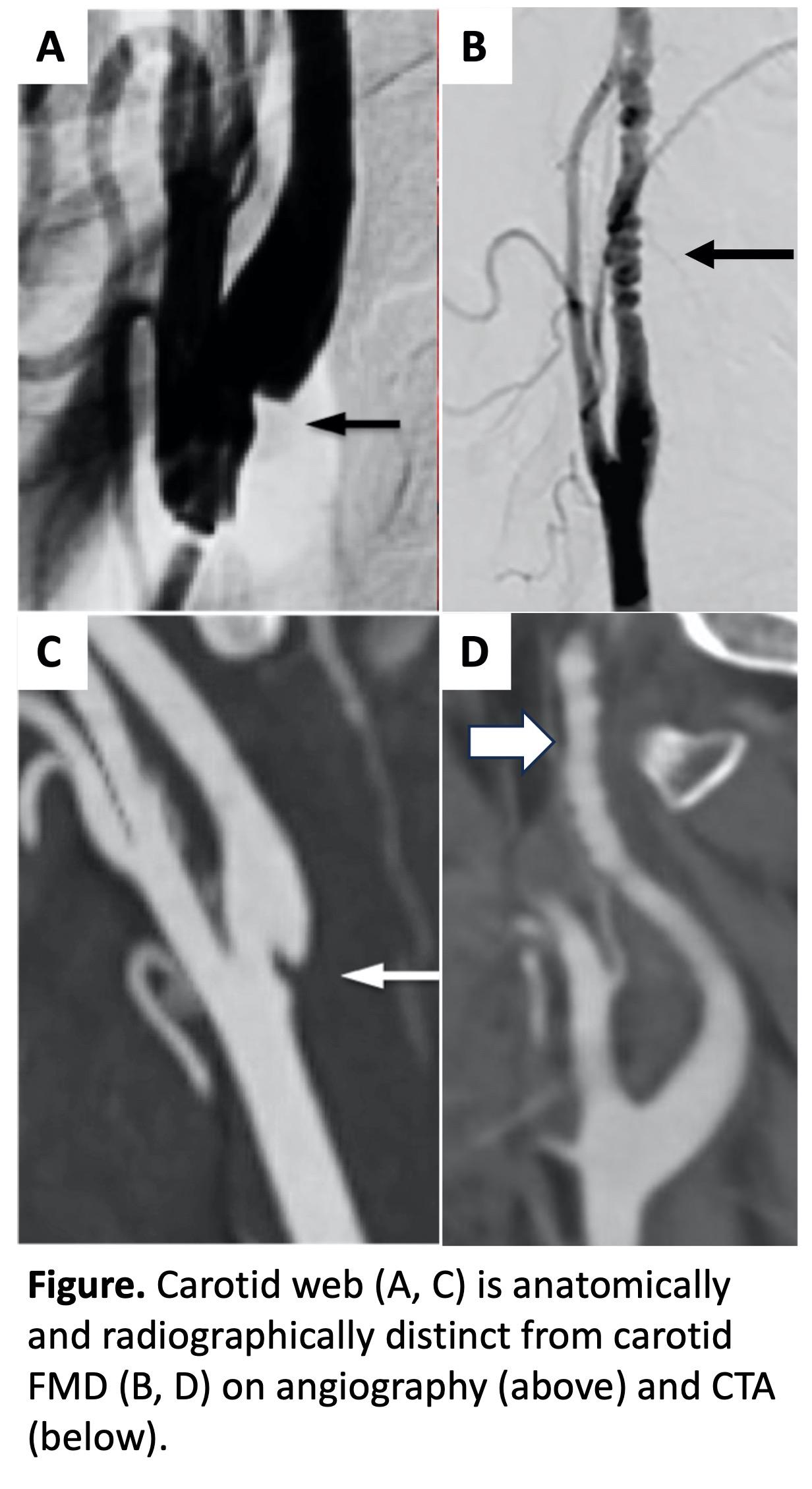Objectives: Carotid web (CaWeb) has traditionally been classified as an atypical form of fibromuscular dysplasia (FMD). Given the vastly different therapeutic principles of carotid FMD and symptomatic CaWeb, this generalization may lead to confusion, misdiagnosis, and recurrent CaWeb-related stroke. We examine a large cohort to assess the frequency of concomitant FMD in high-frequency vascular territories in patients with symptomatic CaWeb in order to distinguish these two commonly associated pathologies.
Methods: An analysis of symptomatic CaWeb at a single institution with a high-volume stroke center was performed. CTA, cerebral angiography, and duplex examination of the carotid, vertebral, and renal arteries in these patients were evaluated by a radiologist and vascular surgeon for features of classic FMD.
Results: Fifty-four patients with symptomatic CaWeb were identified. CTA or cerebral angiography was used to evaluate the bilateral carotid and vertebral arteries. 54/54 (100%) of CaWebs were seen as a linear, shelf-like projection in the posterolateral carotid bulb. Pathology was performed in 26/29 (90%) who underwent carotid endarterectomy to treat CaWeb-all findings were limited to the intimal layer, reported as myxoid degeneration or hyperplastic intimal hyperplasia, versus the medial hyperplasia of the distal ICA with CaFMD. CaFMD was seen in just 1/54 (1.8%) as the typical “beads-on-a-string” in the distal ICA. Vertebral FMD was seen in 0/54. Renal artery angiography or duplex was performed in 12/54 (22%) patients, or 24 arteries; none demonstrated FMD changes.
Conclusions: To our knowledge, this is the largest pathologic and angiographic analysis of CaWeb yet reported. Based on the presented data, CaWeb is not associated with classic FMD, and CaFMD did not constitute a useful marker to confirm or exclude CaWeb diagnosis. Traditional labeling of CaWeb as atypical CaFMD can lead to misdiagnosis, undertreatment, and recurrent stroke. Given the paucity of literature regarding CaWeb, definitive classification as “CaWeb” instead of “atypical carotid FMD” would facilitate appropriate diagnosis and treatment, both of which are distinct from CaFMD. The resultant increased awareness of CaWeb as an independent entity would likely reduce the risk of recurrent stroke in this uniquely vulnerable patient population.
